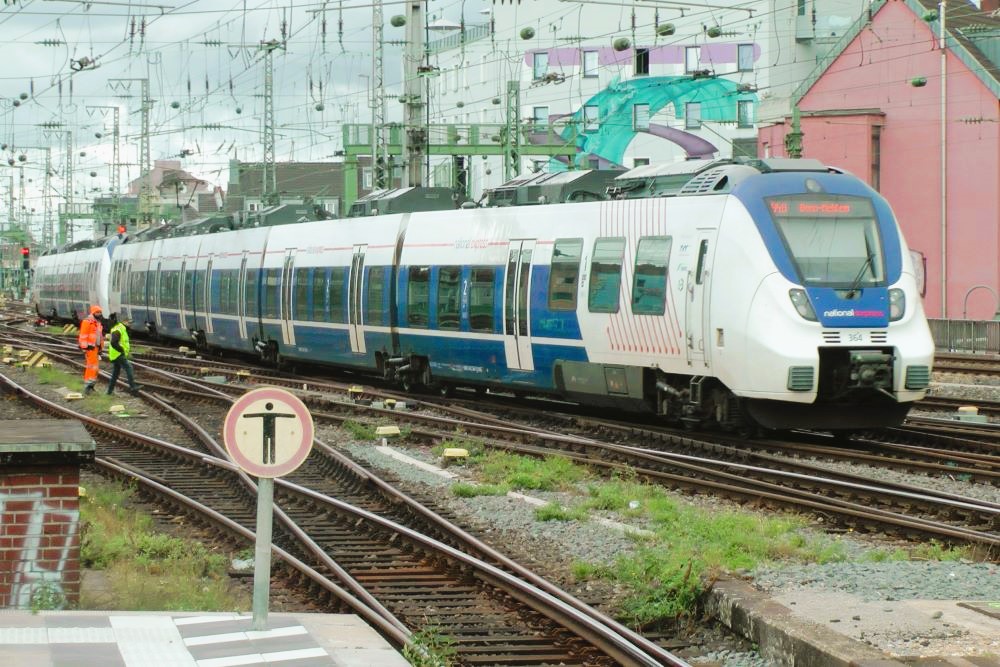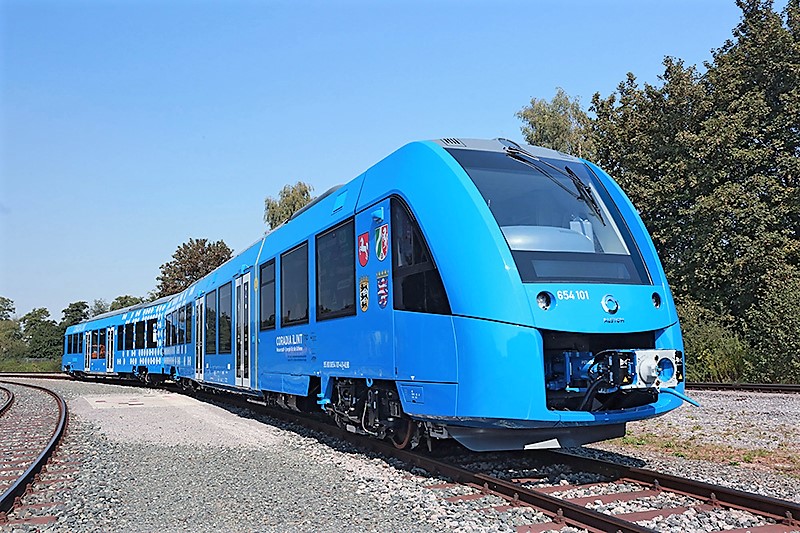Rolling stock • Railcars, EMu and Dmu
Note: For educational purpose only. This page is meant purely as a documentation tool and has no legal effect. It is not a substitute for the official page of the operating company, manufacturer or official institutions. It cannot be used for staff training, which is the responsibility of approved institutions and companies.
Contrary to popular belief, it was not the appearance of the locomotive that gave rise to the railway. The first wagons appeared well before 1825, while some mines in the 18th century – and perhaps even earlier – had tracks with two wooden, and then cast-iron, gutters to roll the wagons, which were originally pushed by men and then pulled by horses. However, a horse pulling a wagon does not make a train. It was not until 1825 that the world’s first real hauled train was built, on the English line from Stockton to Darlington.
From this date onwards, a distinction should be made between the two groups that make up rolling stock:
• on the one hand, hauled rolling stock: passenger carriages and goods and service wagons;
• motorised rolling stock: locomotives, railcars, railcars and indeformable units.
This page presents passenger rolling stock, excluding locomotives and freight wagons, which can be found on their respective pages. Rail operators’ passenger services therefore use all four types of carriage:
Pulled rolling stock
Motorised rolling stock

Regional cars:
• History;
• Suburban rolling stock;
• Medium-distance rolling stock;
• Manufacturers;

Main line cars:
• History;
• UIC X et Z gauges;
• Intercity cars;
• Bar & restaurant cars ;
• Sleeping cars;
• Manufacturers;

Electrical motor units:
• History;
• Suburban rolling stock;
• Medium-distance rolling stock;
• Tram-train ;
• Manufacturers ;

Diesel motor units:
• History;
• Diesel motor units;
• Bimode motor units ;
• Manufacturers ;
This equipment always needs a traction unit to move. Freight wagons appeared before passenger carriages. As the infrastructure improved, train loads became heavier and the wagons themselves became larger. Originally mounted on two or three independent axles, passenger carriages and wagons were gradually fitted with bogies. Patented in 1812, bogies became very popular in the United States in the 1830s, but did not appear in Europe until 1874. By then, wagons and carriages had reached a respectable length. From the 20s and 30s onwards, most passenger coaches were fitted with bogies, and the last axle coaches disappeared for good after the Second World War.
Today, UIC specifications set the maximum permissible load on UIC infrastructure at 22.5 tonnes per axle. This means that the length of vehicles is optimised according to their payload. Lightweight passenger carriages have a standard length of 26.40m, which guarantees that they can be used on all curves and switches in Europe, although there have been carriages of 27.50m in Germany. Freight wagons, on the other hand, have a length that depends on their payload. For example, ore wagons are short because of the heavy tonnage they carry, whereas container wagons are longer because of the lower weight of the intermodal units.
Passenger cars seem to have lost their monopoly of yesteryear, having been supplanted since the 90s by indeformable high-speed trains – TGV, ICE, etc. – but also by the strong growth in self-propelled cars on local, regional and interurban routes of sometimes 200 to 300km.
Motorised rolling stock (railcars, multiple units)
Unlike freight wagons and passenger carriages, motorised rolling stock can be moved by on-board engines, just like any other road vehicle. The energy needed to power railways was originally coal, the fuel of the 19th century that preceded oil and electricity in the 20th century. Nowadays, the energy needed for motorised rolling stock is either electricity collected by an overhead line or fossil fuel in an on-board tank. Recently, dual-mode rolling stock has come onto the market, capable of running both on electrified tracks and completing their journey on non-electrified lines. Battery-powered rolling stock is also beginning to appear.
Motorised rolling stock is made up of self-propelled units that carry passengers and are powered from underneath the body. This majority of platform rolling stock is divided into two technical sub-groups:
• electric railcars that draw their power from an overhead line or a third rail (Emu);
• autonomous railcars, i.e. with their own fuel on board: diesel (Dmu), hydrogen or electric batteries, sometimes a combination of 2 of these elements.
High-speed rolling stock and tilting trains belong to the railcars group. The current trend in 21st century rail operations is to use self-propelled units and railcars in passenger traffic, while the locomotive pulling wagons remains the standard freight train layout. 🟧
——————————————————————————————————————————————————————————————-
